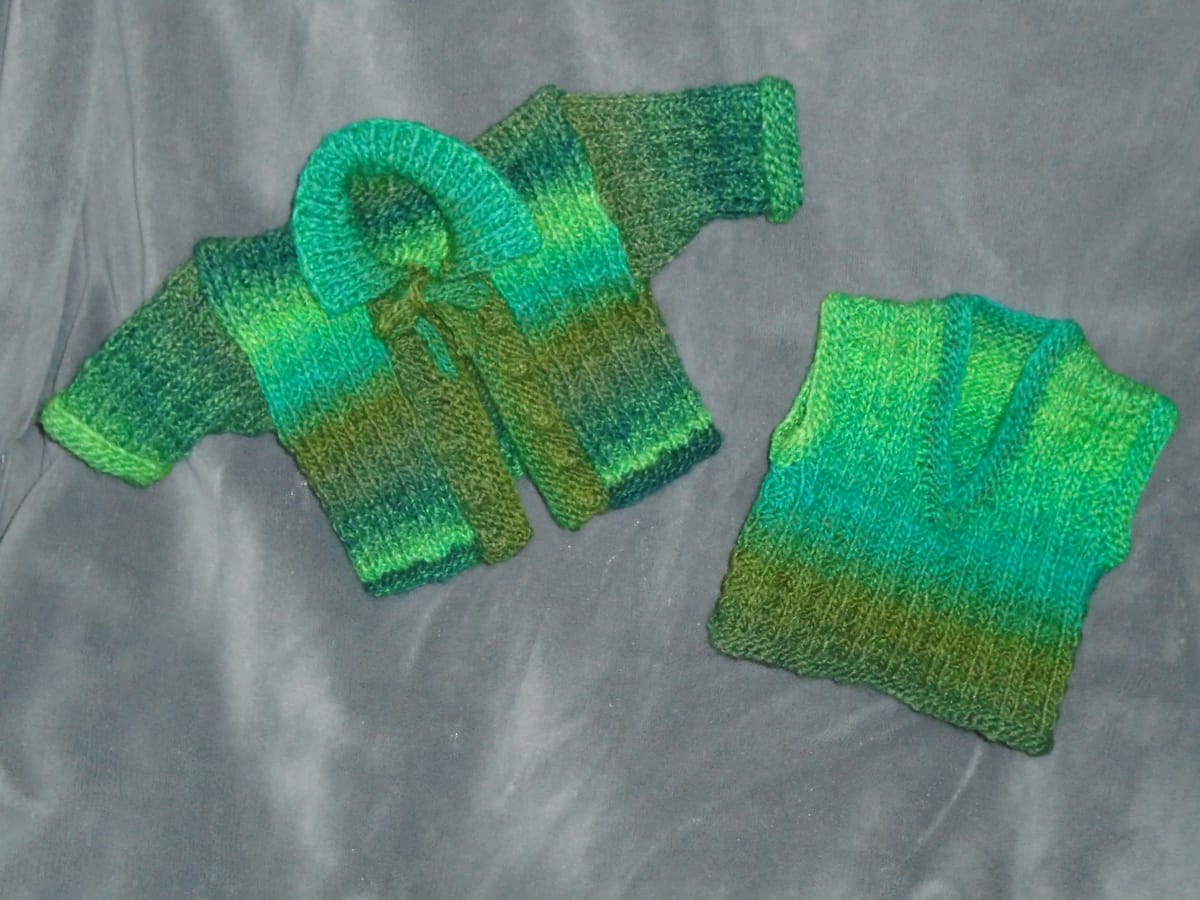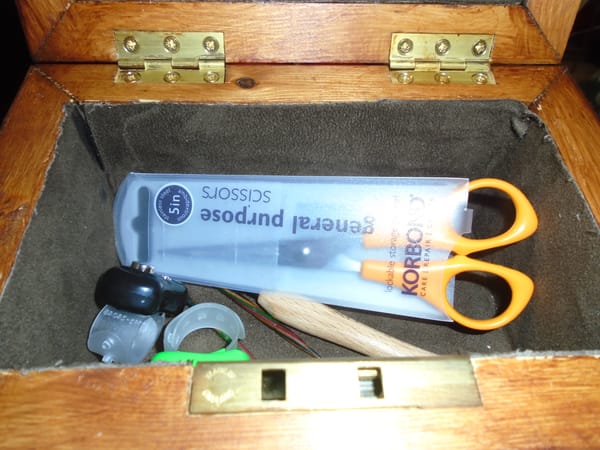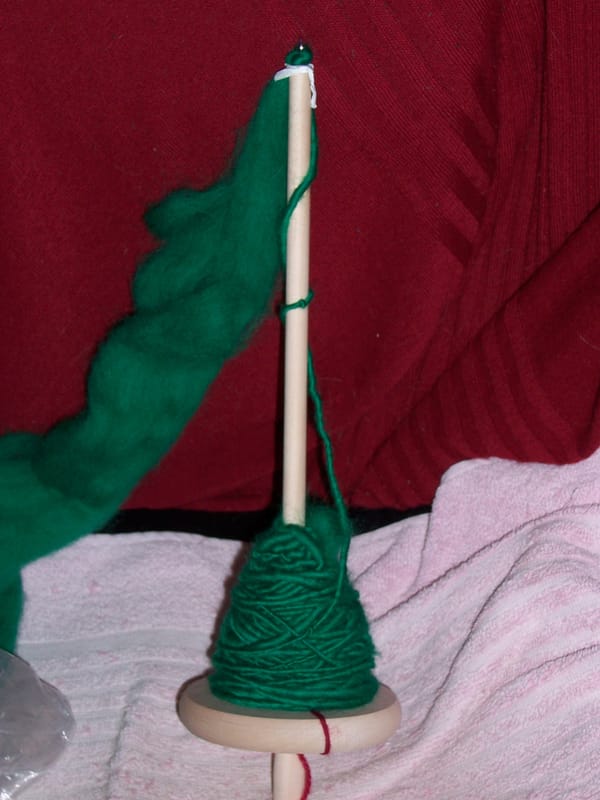Bridge passage

I could have chosen several subtitles here, but the one that comes most forcefully to mind is "I Shall Never Do This Again". Having said that... I'm quite glad I did it once.
I like random yarn, or at least I like the old-fashioned sort where the colour lengths were fairly short and so you ended up with a pleasing variegated effect; these days a lot of apparently random yarn is what they call "self-striping", including the one shown here, and much as I love the colours I think I wouldn't have bought it if I'd realised. My general view on stripes is that if I want them, I'll knit them. And, as you see here, there is another fairly major disadvantage to "self-striping" yarn; it's a great deal less obvious on an adult knit, though it's still going to show, but on baby garments it will be glaringly obvious unless you do something about it. This is the fact that you are not going to get the two sides of a garment to match. The stripes are not just going to go smoothly across the front of a jacket or the neckline of a slipover. No, you're going to have horrendous discontinuities...
Sorry, what was that? You don't see any in the photo?
Ah yes. I was just coming to that.
There is a trick here, of course; and this particular trick is called a steek. I believe it was originally invented to allow Fair Isle cardigans to be worked in the round, so that it is easy to see the design taking shape, rather than having to work on the back every other row. (Personally I'd far sooner work on the back; but each to their own.) A steek is a narrow vertical band of knitting which is not part of the design; it goes across what will eventually become a gap. You finish the main body of the piece, pick up stitches along the edges of the steek for your welt just like you would along an ordinary finished edge, do your welt with the steek still in place... and only then do you cut carefully along the centre of the steek and bind the raw edges. (If you cut the steek first, the whole thing is going to unravel.) So both these pieces are knitted in the round as far as possible, but with steeks at the front of the jacket, the armholes on both pieces, and the V neck on the slipover. I did this four years ago according to the date on the photo, so it was most likely for one of the church babies, but I don't have any very clear memories other than this: steeks are fiddly things, and the steek on the V neck was by far the worst. No wonder that neck welt isn't the smoothest I've ever done. It's got some hefty blanket stitching on the inside.
I can't find a pattern anywhere for this, so I think it was probably one of my own designs - either that, or I adapted a pattern in plain stocking stitch to accommodate the rib you see here. I would normally add cables rather than rib, but the effect with this yarn would have been a little over-busy; I don't like mixing cables with yarns with large colour variations like this one. I do recall I designed the unusual welts on the jacket. Given that it had a slipover with it, it didn't need to fasten all the way down, so I wanted a bit of interest on the welts; and, given that the main design was a vertical rib, I didn't really want a horizontal rib (which would be usual). So I used garter stitch instead, and added bobbles. This may have been the only time I've ever done bobbles on garter stitch (I don't use it much), and I was very pleased with the effect.
The fact that the collar on the jacket matched the neckline welt on the slipover really was just a fluke. I wasn't quite so lucky with either pair of sleeve welts, but at least the jacket sleeves aren't too bad a match.
Anyway, I have learnt my lesson, and I will not be knitting any more jumpers with random yarn I buy online (which is, in practice, any random yarn, since I can't get to an actual physical shop more than once in a blue moon). I'll be saving that for contrast welts. Teaming up a random yarn with a toning plain means I can give a bit of interest to the welts on a baby garment, while ensuring that the cables in the main body of the garment are shown off at their best. Or, if I don't have any random yarn that goes well with the main colour I want to use, there's another trick: two strands of 4-ply yarn are equal to one strand of regular DK (unless your "4-ply yarn" is American, in which case all bets are off - Yarn and Colors Must-Have, a cotton yarn which is sold as a 4-ply, is precisely equivalent in weight to Paintbox Cotton DK), so you can take a couple of toning colours and work them together, just like working a metallic filament in with another yarn except that in this case both strands are the same weight. And that generally gives you a better random effect than an actual random. 😁
I will also not be knitting any more steeks. I've concluded that they're more hassle than they're worth. Still... this set would not have looked good without them.




